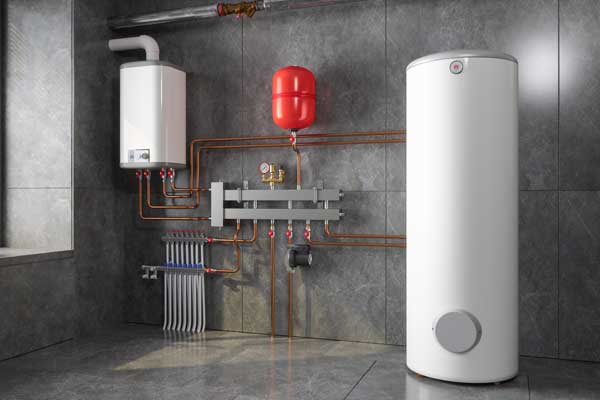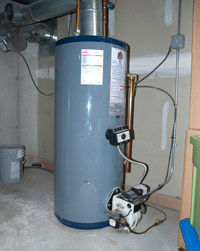The publisher is making several great points related to How to Maintain Your Water Heater & Prolong its Life as a whole in this content which follows.

Warm water is necessary for day-to-day convenience, whether it's for a rejuvenating shower or washing dishes. To guarantee your warm water system runs successfully and lasts much longer, normal upkeep is key. This article provides practical tips and insights on exactly how to maintain your home's hot water system to avoid disruptions and pricey fixings.
Intro
Preserving your home's hot water system may appear complicated, but with a few simple actions, you can ensure it operates efficiently for many years to come. This guide covers every little thing from recognizing your warm water system to DIY maintenance tips and recognizing when to employ professional help.
Value of Maintaining Your Hot Water System
Normal upkeep not only prolongs the lifespan of your warm water system yet likewise ensures it runs effectively. Overlooking upkeep can cause lowered effectiveness, greater energy bills, and also premature failing of the system.
Indications Your Hot Water System Requirements Upkeep
Understanding when your hot water system requires focus can stop major issues. Look out for indicators such as irregular water temperature level, unusual sounds from the heating unit, or corroded water.
Understanding Your Warm Water System
Before diving right into maintenance jobs, it's valuable to understand the fundamental components of your warm water system. Generally, this consists of the water heater itself, pipelines, anode poles, and temperature controls.
Month-to-month Maintenance Tasks
Normal monthly checks can help capture minor concerns before they intensify.
Flushing the Hot Water Heater
Flushing your water heater removes sediment buildup, enhancing performance and extending its life.
Monitoring and Replacing Anode Rods
Anode rods protect against deterioration inside the tank. Checking and changing them when worn out is vital.
Evaluating and Changing Temperature Level Settings
Changing the temperature level settings guarantees optimum performance and security.
Do It Yourself Tips for Maintenance
You can carry out numerous maintenance jobs on your own to maintain your warm water system in top condition.
Looking for Leaks
Frequently evaluate pipes and connections for leakages, as these can bring about water damages and greater bills.
Evaluating Pressure Relief Valves
Evaluating the stress safety valve ensures it functions properly and protects against excessive pressure accumulation.
Protecting Pipelines
Shielding hot water pipes lowers heat loss and can save energy.
When to Call an Expert
While DIY maintenance is helpful, some concerns call for professional knowledge.
Complicated Problems Calling For Specialist Aid
Instances include major leakages, electric troubles, or if your hot water heater is continually underperforming.
Regular Expert Maintenance Benefits
Professional maintenance can include comprehensive evaluations, tune-ups, and making sure conformity with security requirements.
Final thought
Routine maintenance of your home's warm water system is crucial for performance, long life, and price financial savings. By following these pointers and recognizing when to look for specialist aid, you can make sure a trustworthy supply of hot water without unexpected disruptions.
How to Maintain an Instant Hot Water Heater
Before tinkering with your hot water heater, make sure that it’s not powered on. You also have to turn off the main circuit breaker and shut off the main gas line to prevent accidents. Also turn off the water valves connected to your unit to prevent water from flowing into and out of the appliance. 2. When you’re done, you have to detach the purge valves’ caps. These look like the letter “T” and are situated on either side of the water valves. Doing so will release any pressure that has accumulated inside the valves while at the same time avoid hot water from shooting out and burning your skin. 3. When the purge valves’ caps are removed, you have to connect your hosing lines to the valves. Your unit should have come with three hoses but if it didn’t, you can purchase these things from any hardware or home repair shops. You can also get them from retail stores that sell water heating systems. Read the user’s manual and follow it to complete this task properly. When the hosing lines are connected, open the purge port’s valves. 4. You should never use harsh chemical cleaners or solutions when cleaning your unit. Make use of white vinegar instead. It should be undiluted and you’ll probably use about 2 gallons. 5. Now flush your water heater. This task should probably take about 40 minutes. We can’t give you specific directions for this because the procedure is carried out depending on the type, model and brand of your heater. With that being said, refer to the user’s manual. 6. When you’re done draining the unit, you have to turn off the purge port valves again. Remove the hosing lines that you earlier installed on each of the water valves. Put the valve caps (purge port) back in their respective places and be very careful so as not to damage the rubber discs that are found inside these caps. 7. Now that everything’s back in place, check your user’s manual again to find out how to reactivate your water heating system. 8. Once it is working, turn one of your hot water faucets on just to let air pass through the heater’s water supply pipes. Leave the tap on until water flows smoothly out of it. https://www.orrplumbing.com/blog/2014/september/how-to-maintain-an-instant-hot-water-heater/

I was made aware of that write-up on How to Maintain Your Water Heater & Prolong its Life through a buddy on a different web blog. Do you know about somebody who is very much interested in the topic? Feel free to promote it. Many thanks for your time. Revisit us soon.
This Page
 Tatyana Ali Then & Now!
Tatyana Ali Then & Now! Mike Vitar Then & Now!
Mike Vitar Then & Now! Nancy Kerrigan Then & Now!
Nancy Kerrigan Then & Now! Atticus Shaffer Then & Now!
Atticus Shaffer Then & Now! Barbara Eden Then & Now!
Barbara Eden Then & Now!